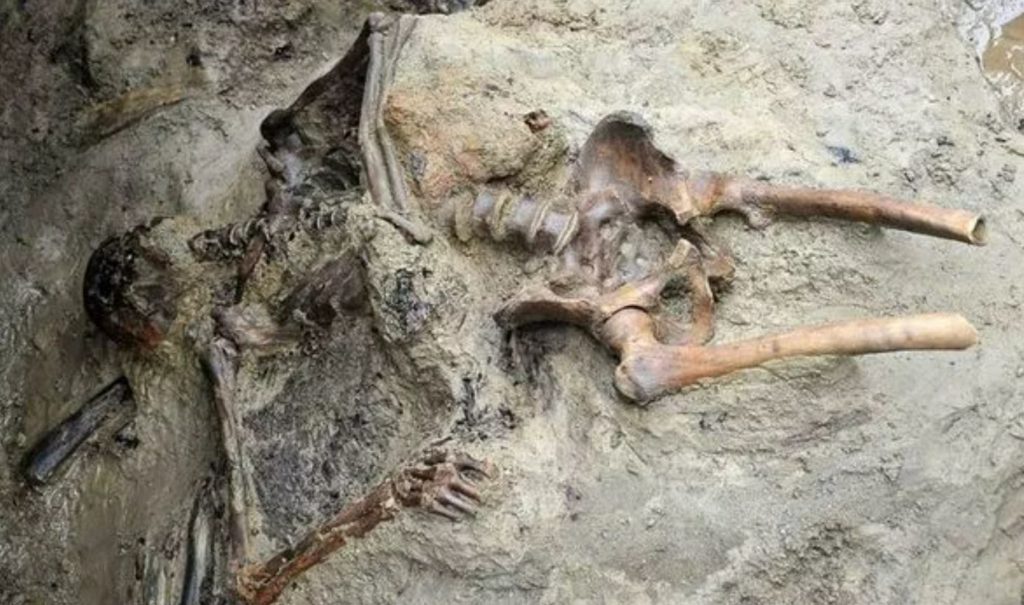Archaeologists discovered the skeleton of a man who was killed by Mount Vesuvius’ historic eruption about 2,000 years ago.
The remains were discovered on an old shore in Herculaneum, and it has been speculated that he was fleeing land. The man died mere steps from the sea in the old Roman town, which was destroyed together with Pompeii by the massive eruption of Vesuvius in 79 AD.
The man was believed to be fleeing the town’s “boat sheds,” which are stone arches used to store nets and fishing equipment, according to archaeologists.
He didn’t make it very far before being overtaken by the burning “pyroclastic” cloud that erupted from the volcano and engulfed Herculaneum at a pace of more than 60 mph.

According to Francesco Sirano, director of the Herculaneum Archaeological Park: “When the pyroclastic cloud arrived, the temperature was above 500C – it was very, very hot.
“It was so hot that everything living was vaporised immediately, like this man.”
When the man fell on his back, he was facing away from the sea and toward the land, according to his skeleton.
Mr Sirano believes this is due to him turning to face the oncoming cloud of hot gas and volcanic debris.
As the gas hit him and killed him instantly, the pyroclastic cloud dragged his body to the edge of the water along the ancient beach and possibly into the shallows.
Mr Sirano is optimistic that an investigation of the man’s remains will offer a snapshot of the disaster, revealing new insights into the eruption and ordinary life in the old town.
This is the first victim discovered in 14 years, providing archaeologists with the ideal opportunity to investigate Pompeii using some of the most advanced scientific and technological approaches, including 3D photogrammetry of every phase of the dig.
Vesuvius last erupted in 1944, seven months after the Allied invasion of Italy, indicating that it is a very active volcano.
Vesuvius is regarded as one of the most dangerous volcanoes in the world, not only because it is active, but also because three million Italians live close enough to it to be damaged by a future eruption.
Half a million people live even closer to the volcano in an area known as the “danger zone,” making it the world’s most densely populated volcanic reign.
The Italian government is so anxious about Vesuvius that it is deliberately encouraging visitors to avoid the area around the dome.
Officials are developing a national park near the volcano wherein no one will be authorized to reside.
Image Credit: Vincenzo Izzo/SIPA
You were reading: 2,000-year-old ‘vaporised’ man’s skeleton unearthed in Pompeii